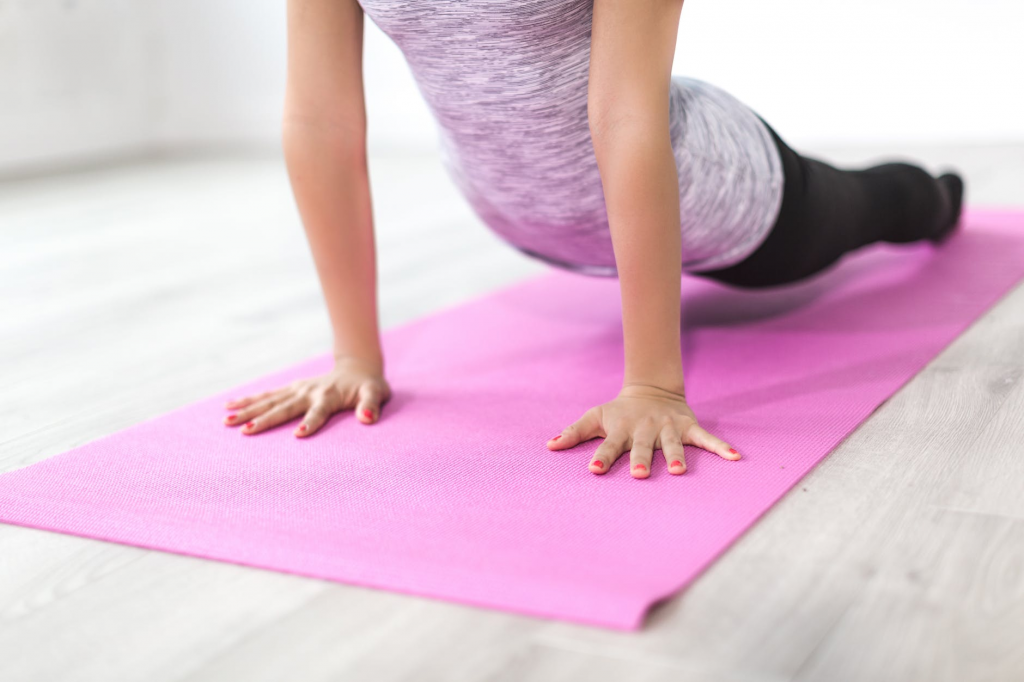From the outside looking in, you may think that a mat Pilates class looks like a rather sedentary activity. Most of the session is spent lying down either on your back, stomach or side. Sounds rather relaxing!! However, with practise and using the principles based around concentration, control and balance – all of which require an enormous amount of strength and effort, you can gain so much.
What is Pilates?
Pilates aims to strengthen the body in an even way, with particular emphasis on core strength to improve general fitness and wellbeing.
Pilates was developed by Joseph Pilates who believed that mental and physical health were closely connected. His method was influenced by gymnastics, boxing and wrestling. Joseph immigrated from Germany to New York in the 1920’s where he opened his first studio and taught his method, originally called ‘contrology’ for several decades!
Who is Pilates for?
Pilates can offer something for people of all ages and levels of ability and fitness from beginners to elite athletes. For athletes, including dancers, Pilates can complement training by developing whole-body strength and flexibility and help reduce risk of injury. Mat-based Pilates can be particularly beneficial as it is easy to practise at home or at the gym with no special equipment needed.
What are the benefits?
- Focus and Improve your core strength
Every class offers one of the most effective and challenging ways of developing core strength and stability. A strong core (abs, back and glutes) boosts your overall athletic output and daily function. This increased strength and control of your core will help you avoid injury and improve your posture and muscle tone.
- Increase your muscular endurance and flexibility
There is some evidence to show that engaging in mat Pilates for a mere 60 minutes per week significantly improves abdominal stability, hamstring flexibility and upper-body muscular endurance.
- Maintain the Health of your spine
Pilates mat exercises will help if you have any issues with the health of your back and spine. Pilates can be particularly helpful for people with pain caused by excessive movement and degeneration of the vertebrae, discs and joints. Pilates, also helps balance the sides of the body, aiding in creating postural symmetry. This will also help to prevent injuries caused by uneven stress patterns. The movements and exercises involved improve mobility in the hip and shoulder joints, preventing excess stress on the spine. Pilates places heavy focus on the proper alignment of the back. This focus will make you more aware of how you hold yourself from day to day and will inevitably improve your posture.
- Improve your balance and body awareness with the 8 Principles of Pilates;
- Concentration, promoting the mind-body connection. As you focus and become mindful of each body movement, Pilates states you will receive optimum physical value from each movement as well as enhance your body awareness.
- Centering. During your Pilates workout, you should consciously bring your focus to the center of your body. As you focus within, this Pilates principle suggests you will bring calm to both your body and spirit. Pilates called the centre of your torso the “powerhouse,” from which all energy for exercise is derived.
- Control. Pilates’ method is based on mindfulness, including proper, safe and complete muscle With proper control, you utilize the exact and correct form, leaving no part of your body unattended.
- Precision. Movements are slow, of good quality and precise. Quality over quantity is key!
- Breathing. Deep, controlled, diaphragmatic breathing activates blood circulation and awakens cells and muscles. By focussing on the breath, this helps engage your core more effectively and aids with flow
- Alignment. From head to toes, the Pilates method stresses good posture and awareness of the placement of all parts of your body. We always try and keep your body aligned with a neutral posture
- Flow. Pilates routines are completed through a gentle flow. Grace, ease and fluidity are the intention Joseph Pilates applied to all exercise. Continuous, smooth, and elegant movement as you transition from one pose to another will bring strength and stamina according to this principle.
- Integration. Breath, control, mindfulness, centering, alignment, and precision unite as the many groups of muscles work together to support and govern movement. Practicing each of the above principles achieves Pilates’ goal of an integrated mind-body workout.
Interested in Joining a Class?
From 4th June 2019, we will be starting weekly Mat-based Pilates classes at our South Kensington Clinic in the Evolve Wellness Centre.
This will be lead by Lauren Castledine-Wolfe, Senior Physiotherapist and Pilates Instructor.
To Book or for Lauren Castledine-Wolfere information contact us 020 7603 0040
Author: Lauren Castledine-Wolfe

